Best Chicken Breeds for Beginners
Raising chickens is one of the things I love most about our homestead, and over the years, I learned quite a bit about the different breeds. If you are starting out, this list of best chicken breeds for beginners will help you create a list of hens to fill your backyard coop.
Raising chickens should be fun and rewarding, so starting out with the best chicken breeds for you, where you live, and your family is a good way to start.
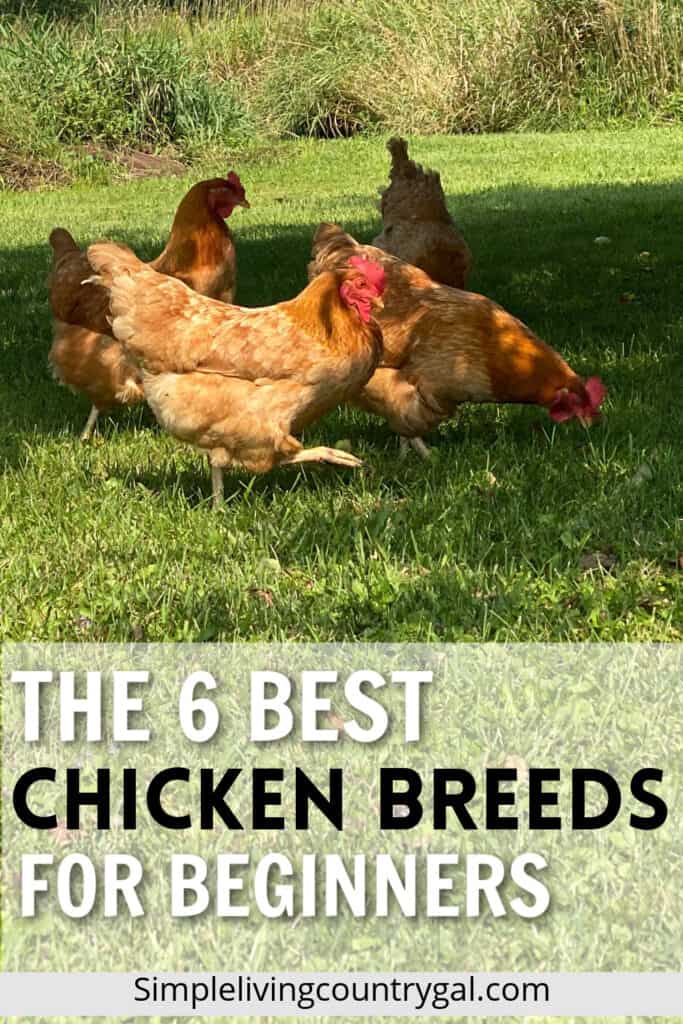
Raising chickens can be incredibly fulfilling, but it can also be a steep learning curve. Choosing the right breed initially can make all the difference and set you up for a more successful and enjoyable backyard farming experience. Whether you’re looking for heavy egg layers or simply a few pets, this guide will help you make an informed choice.
How many chickens should a beginner start with?
For beginners, starting small is usually the best approach. A flock of 3-5 hens is a good number of hens to have when first starting out. This number is manageable and will provide a reasonable amount of eggs for a small family without overwhelming you with too many eggs.
Read: How Many Chickens Do I Need?
How much space does a chicken need in a coop?
In terms of coop space, you want to be sure your chickens have enough room to move comfortably. Generally, each chicken needs a minimum of one square foot of coop space, but for ideal conditions, 2 to 3 square feet per chicken is recommended. This allows them enough room to stretch their wings, move around, and avoid feeling cramped.
Remember, overcrowded coops can lead to stress, disease, and behavioral issues among your flock. If your chickens will be spending most of their time in the coop and not free-ranging, you may want to consider providing even more space.
Finally, you’ll want to keep in mind if you plan to grow your flock in the future. By setting up a larger coop now, you will be able to add on more hens each year without having to make heavy improvements to your setup.
Chicken Coop Setup:
Books on Raising Chickens:
Storey’s Guide to Raising Chickens, 3rd Edition


Best Chicken Breeds for Beginners
Choosing the right breed of chickens when starting out can feel overwhelming, with so many breeds to choose from. However, some breeds are more suitable for beginners due to their hardiness, docile nature, and steady egg production. Here are some of the best chicken breeds for beginners to consider.
#1. Rhode Island Red
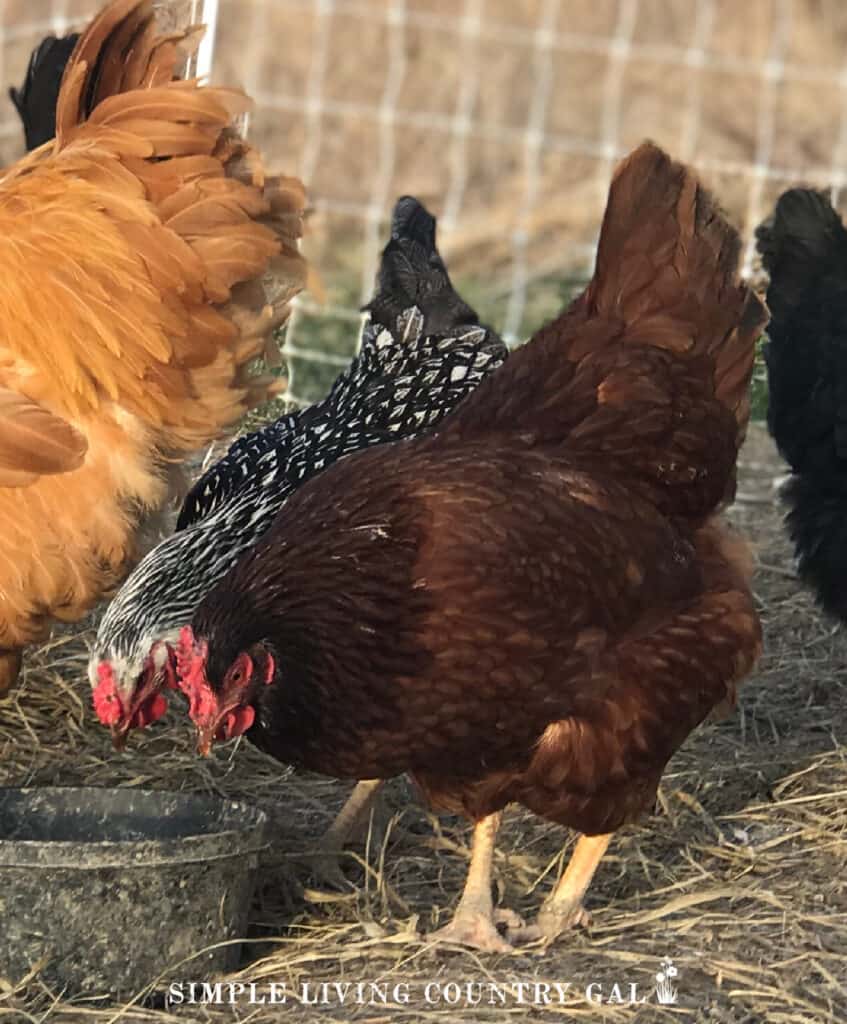
Rhode Island Red chickens are a popular choice for both beginners and seasoned poultry keepers due to their versatility and hardy nature. Named after the state where they were developed, these chickens are renowned for their excellent egg-laying abilities and adaptability to various environments.
Characteristics
- Appearance: Rhode Island Reds have a deep, reddish-brown feathering and upright, robust stature.
- Size and Appearance: They are medium to large-sized birds, with hens typically weighing 6 to 7 pounds, and roosters reaching up to 9 pounds.
- Egg Laying: These birds are excellent layers, producing around 200-300 brown eggs per year.
- Temperament: Their temperament is usually friendly and easy-going, though roosters can display some assertiveness.
- Adaptability: This breed is also known for its ability to adapt to various climates and housing conditions, making them a practical choice for different farming situations.
Why They Are Good for Beginners
Rhode Island Reds are an excellent choice for beginners mainly because of their hardiness and heavy egg laying. They are robust and resilient, with the ability to adapt to a wide range of climates and conditions, reducing the need for specialized care. They are calm and friendly, making them easy to handle, even for those new to poultry keeping.
With their low maintenance needs, they allow beginners to get a feel for chicken keeping without feeling overwhelmed. Lastly, their impressive size and attractive appearance also add an element of enjoyment to the experience, making Rhode Island Reds an all-around great breed.
#2. Plymouth Rock/Barred Rock

Another great breed for beginners, and one that is incredibly popular, is the Plymouth Rock, commonly known as the Barred Rock. Known for their docile nature, superb egg-laying ability, and handsomely marked feathers, these birds are a great first choice that can add some color to your flock.
Characteristics
- Appearance: Plymouth Rock chickens, especially the Barred Rock variety, are notable for their beautiful, distinctive plumage. Their feathers are white and black, forming a pattern known as ‘barred’ or ‘striped’. This gives them a unique, attractive appearance that is easy to spot in a flock.
- Size and Appearance: They are a medium to large-sized breed, with hens typically weighing around 7 to 8 pounds and roosters reaching up to 9 to 10 pounds.
- Egg Laying: These chickens are prolific layers, offering a steady supply of large, brown eggs. You can expect about 200-280 eggs per year from each hen.
- Temperament: These birds are known for their docile, friendly temperament. They are easy to handle and generally get along well with other chickens, making them a great addition to any flock.
- Adaptability: Plymouth Rock chickens are also quite hardy and adaptable. They can tolerate a variety of climates and housing conditions, adding to their reputation as a fantastic choice for both beginners and experienced poultry keepers.
Why They Are Good for Beginners
Plymouth Rock, particularly the Barred Rock variety, are an excellent choice for beginners. Firstly, their docile and friendly nature makes them easy to handle, even for those with little or no experience. Secondly, their consistent egg-laying is a plus for anyone who is interested in egg production for personal use or small-scale selling.
Finally, their hardiness and adaptability mean they can thrive in different climates a coops, easing the burden on beginners who might not yet have a perfect set up. This combination of traits makes Plymouth Rock chickens an excellent choice for individuals just starting out.
#3. New Hampshire Red
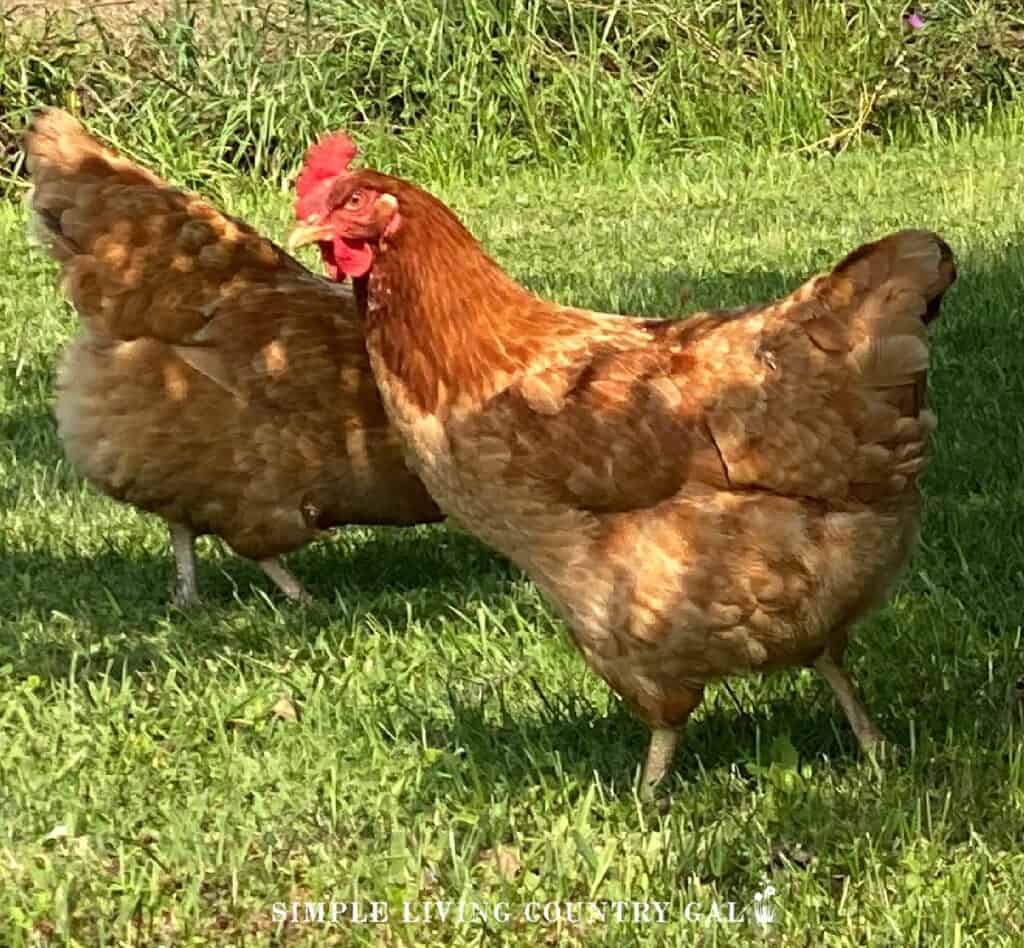
New Hampshire Reds are a favorite of many chicken owners. Recognized for their rapid growth and consistent egg-laying, these chickens would be a plus in any flock. Even though they are said to be red, they resemble a lovely golden color with thick soft feathers.
Characteristics
- Appearance: Despite their name, their plumage is usually a rich, chestnut color, highlighted by a deep black tail. Roosters generally weigh in around 8.5 pounds, with hens a bit lighter at 6.5 pounds.
- Size: New Hampshire Reds are medium-sized birds with a deep, broad body. Despite their name, their plumage is usually a rich, chestnut color, highlighted by a deep black tail. Roosters generally weigh in around 8.5 pounds, with hens a bit lighter at 6.5 pounds.
- Egg Laying: New Hampshire Reds are reliable layers with hens producing approximately 200-300 large, brown eggs per year. They are also known to be dependable winter layers.
- Temperament: These birds are known for their vigor and hardiness. They are active foragers and show excellent resistance to common poultry diseases. Their active nature makes them excellent for free-range conditions.
- Adaptability: New Hampshire Reds are robust and adaptable to a variety of living conditions and climates. They are known for their early maturity and can handle both confinement and free-ranging environments well. This makes them another excellent choice for beginners and experienced poultry keepers alike.
Why They Are Good for Beginners
New Hampshire Reds are an excellent choice for beginners due to their hardiness and adaptability, which makes them easy to manage, even for those new to poultry keeping. Their robust nature and resistance to common poultry diseases reduce the risk of illness in the flock. Their reliable egg-laying provides a steady source of eggs, making them a good choice for first-time chicken owners.
Their active nature and adaptability to both free-range and confined environments give beginners flexibility in housing options. Lastly, their early maturity means you will see eggs sooner than other breeds. All these characteristics make New Hampshire Reds a great beginner-friendly chicken breed.
#4. Australorp
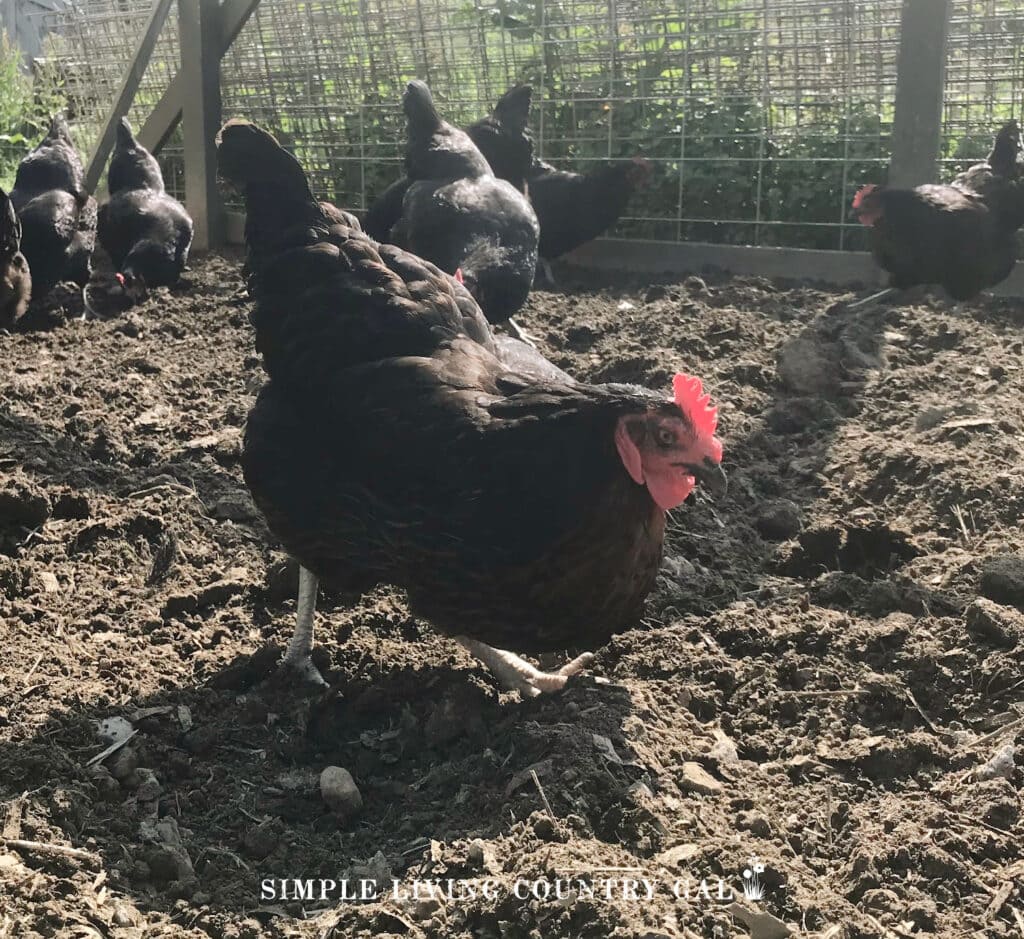
The Australorp, a breed hailing from Australia, is known for its impressive egg-laying and overall friendly disposition, making it an exceptional choice for beginners.
Characteristics
- Appearance: Australorps are large, attractive birds with a sleek black plumage that often reflects a beetle-green sheen in sunlight.
- Size: Hens typically weigh around 6.5 to 7.5 pounds, while roosters are usually around 8.5 to 10 pounds.
- Egg Laying: Australorps are great layers known for their record-setting egg production. They can lay approximately 250 to 300 large brown eggs per year. They have even been known to lay eggs throughout the winter months when other breeds may stop.
- Temperament: This breed is known for their calm and friendly demeanor. They are docile, making them easy to handle and a good fit for families with children.
- Adaptability: Australorps adapt well to various environments. They can thrive in both free-ranging conditions and confined spaces. Their dense plumage also renders them cold-hardy, making them suitable for colder climates.
Why They Are Good for Beginners
Australorps are an excellent choice for beginners mainly for their ability to lay a lot of eggs, ensuring a steady supply. Their gentle and friendly nature makes it easier to handle them, which is a plus for any new owner. The breed’s adaptability to different environments and resistance to cold climates reduces the need for specialized housing or care. Lastly, their striking appearance and pleasant demeanor make them a joy to raise.
#5. Buff Orpington
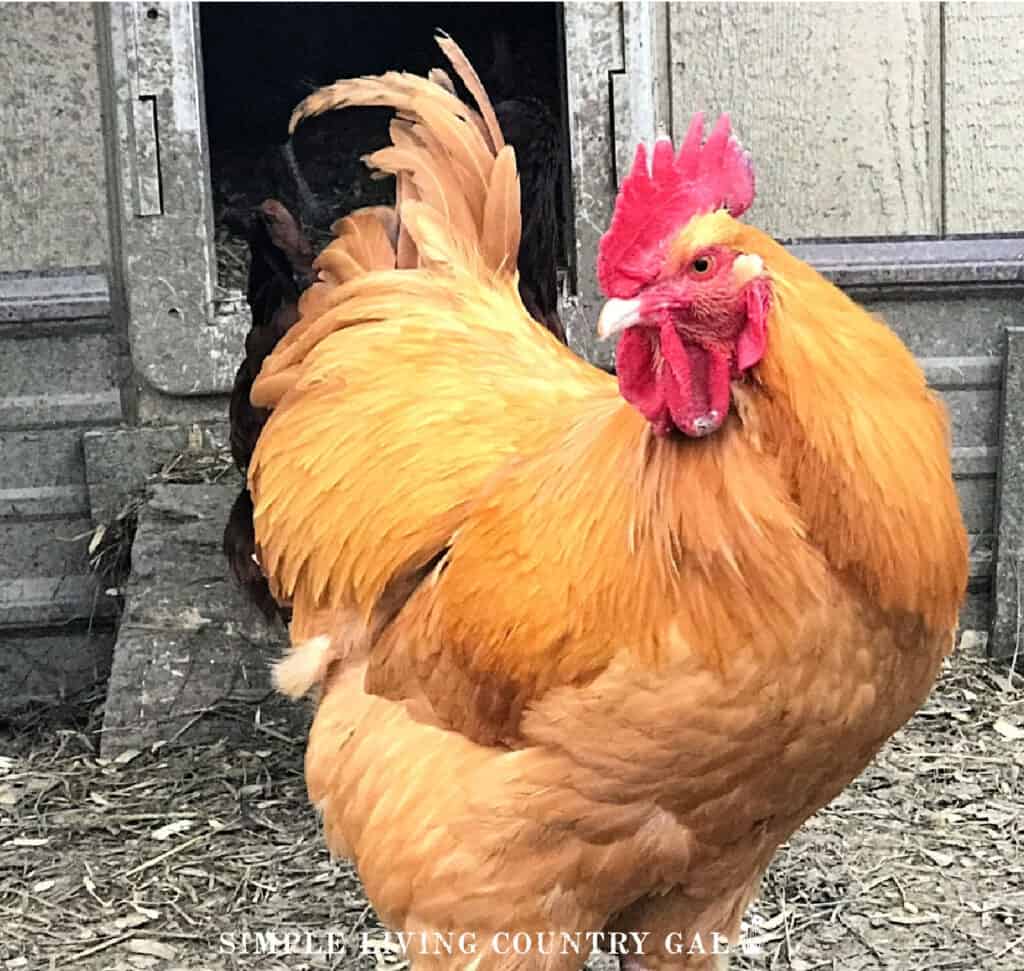
Buff Orpington
The Buff Orpington, a classic British breed, is another excellent choice for beginners. Known for their gorgeous golden plumage, size, and happy nature, this breed is a great option.
Characteristics
- Appearance: Buff Orpingtons are an attractive breed with golden-yellow feathers. They have a curvy shape with a broad back and deep body, which adds to their overall appeal.
- Size: These birds are quite large, with hens typically weighing between 7 to 8 pounds and roosters around 8.5 to 10 pounds.
- Egg Laying: Buff Orpingtons are good layers, capable of producing approximately 150 to 200 medium to large light brown eggs annually. They also have brooding tendencies, which means they might sit on their eggs to hatch them.
- Temperament: Known for their docile and friendly nature, Buff Orpingtons are easy to handle, making them a popular choice in backyard flocks. They get along well with other birds and are known to be excellent with children.
- Adaptability: Buff Orpingtons are a hardy breed that does well in a variety of climates. They can tolerate cold weather thanks to their dense feathering but also fare well in warmer conditions. They are equally comfortable in free-ranging conditions or confined spaces.
Why They Are Good for Beginners
Buff Orpingtons are an ideal choice for beginners because of their friendly and calm temperament, making them easy to handle and less intimidating to pick up. They are great egg layers, providing a steady supply of eggs throughout the year. Their adaptability to various climates and living conditions makes them a low-maintenance breed. Their brooding tendencies can potentially lead to a self-sustaining flock, which can be an exciting and educational experience for families.
#6. Wyandotte
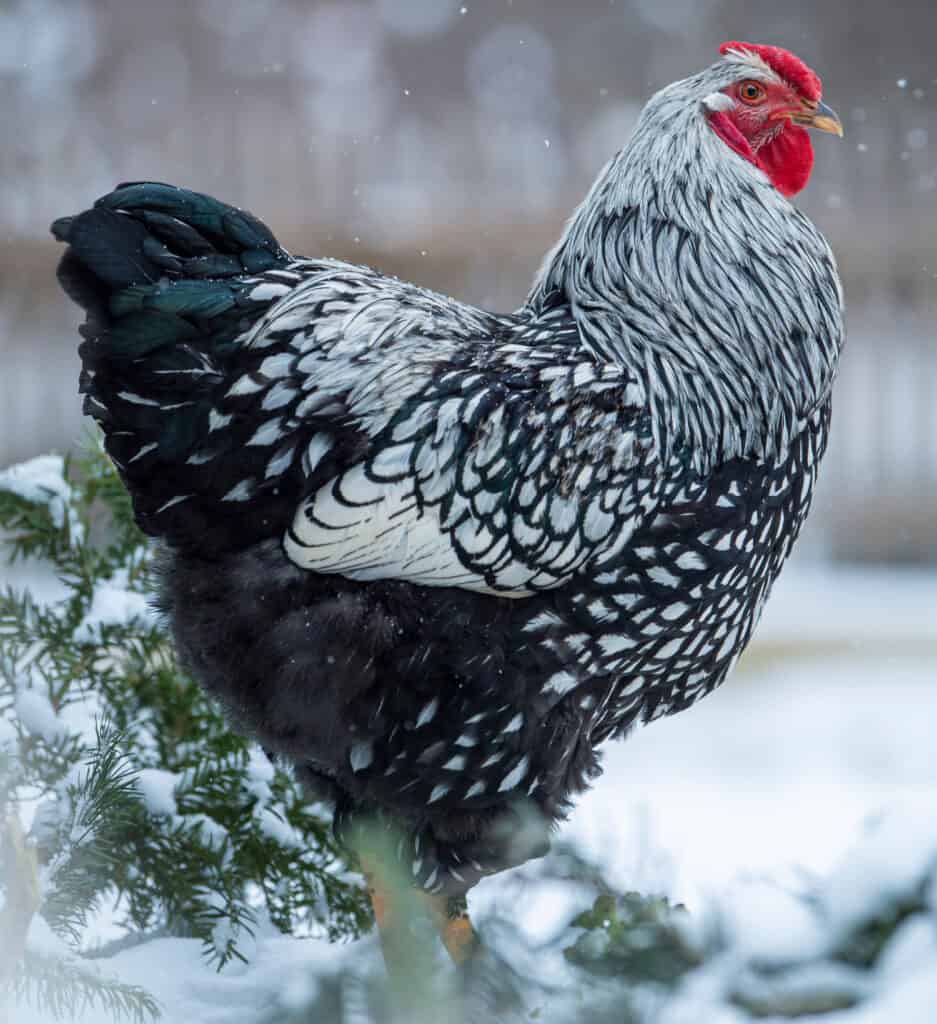
The Wyandotte is a true American breed. Recognized for their striking laced feathers, they really do stand out in a flock. Wyandottes are versatile birds that are consistent egg-layers that can tolerate different weather conditions.
Characteristics
- Appearance: Wyandottes are large, attractive birds with a rounded body and a rose comb. They are recognized for their laced, silver, or golden feather patterns, though they also come in a variety of other colors and patterns.
- Size: On average, mature Wyandotte hens weigh around 6-7 pounds, while the roosters can reach up to 8-9 pounds.
- Egg Production: Wyandottes are reliable egg layers, typically producing around 200 medium to large brown eggs annually.
- Temperament: Wyandottes are known for their docile and sociable nature. They are friendly, easy to manage, and get along well with other birds in a flock. However, they can sometimes show a bit of assertiveness.
- Adaptability: Being a hardy breed, Wyandottes do well in various climates. They have thick feathers that allow them to tolerate cold conditions while also managing well in warmer climates. They are comfortable in free-ranging environments or confined spaces, making them versatile for different types of living conditions.
Why They Are Good for Beginners
Wyandottes are a good choice because of their ability to tolerate a wide range of weather conditions, reducing the need for specialized housing or care during extreme temperatures with consistent egg production. Their docile and sociable temperament makes them easy to manage, which can be helpful for newcomers who might not yet be comfortable handling more assertive breeds. Finally, their colorful and varied feather patterns make them a visually appealing addition.
When starting out with backyard chickens, finding a breed that fits your weather, confidence, and family is the best way to start. Try a few on our list and see which ones you like best. Keep this list of the best chicken breeds for beginners handy any time you want to add to your backyard flock.




